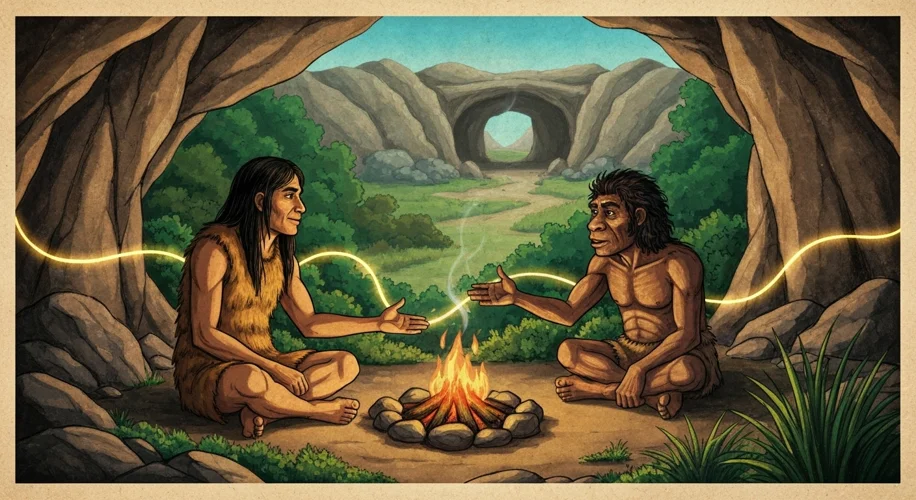Did you know our ancient family tree has some surprising branches? For a long time, scientists thought that modern humans, Homo sapiens, and our close cousins, Neanderthals, only started mixing about 50,000 to 60,000 years ago. This was based on fossil and genetic evidence suggesting they met and mingled after Homo sapiens migrated out of Africa.
But science is always evolving, and so is our understanding of human history! Recent groundbreaking research is rewriting that timeline, suggesting that interbreeding might have happened much, much earlier – possibly as far back as 100,000 years ago.
What’s Changed?
This new perspective comes from a combination of advanced genetic analysis and the study of ancient fossils. By looking at the DNA of ancient individuals and comparing it with modern human genomes, scientists can trace these ancient connections.
Did you know that most people of non-African descent today carry about 1-4% Neanderthal DNA? This has been a well-established fact for a while. However, the new evidence points to a much earlier encounter. Imagine this: our ancestors, Homo sapiens, were still exploring and spreading across the globe, and somewhere along the way, they met and had children with Neanderthals.
Why Does This Matter?
This discovery is fascinating because it paints a more complex picture of our origins. It means that these interactions weren’t just a single, late event. Instead, there might have been multiple encounters over a much longer period.
Think about what this means for human evolution. It suggests that gene flow between these different human species was happening far earlier than we previously understood. This interbreeding could have played a role in how Homo sapiens adapted to new environments outside of Africa. Some of the Neanderthal DNA we carry today might have provided advantages, like helping us adapt to different climates or immune systems.
What This Tells Us
It’s a reminder that human history isn’t a straight line. It’s more like a complex tapestry, woven with threads from different groups interacting, sharing, and yes, even interbreeding.
This ongoing research is a testament to how much we can learn by looking closely at both ancient remains and the genetic code passed down through generations. It’s a beautiful example of science continually refining our understanding of where we come from. As we continue to uncover more fossils and develop even more sophisticated genetic tools, who knows what other secrets our ancient past might reveal!

